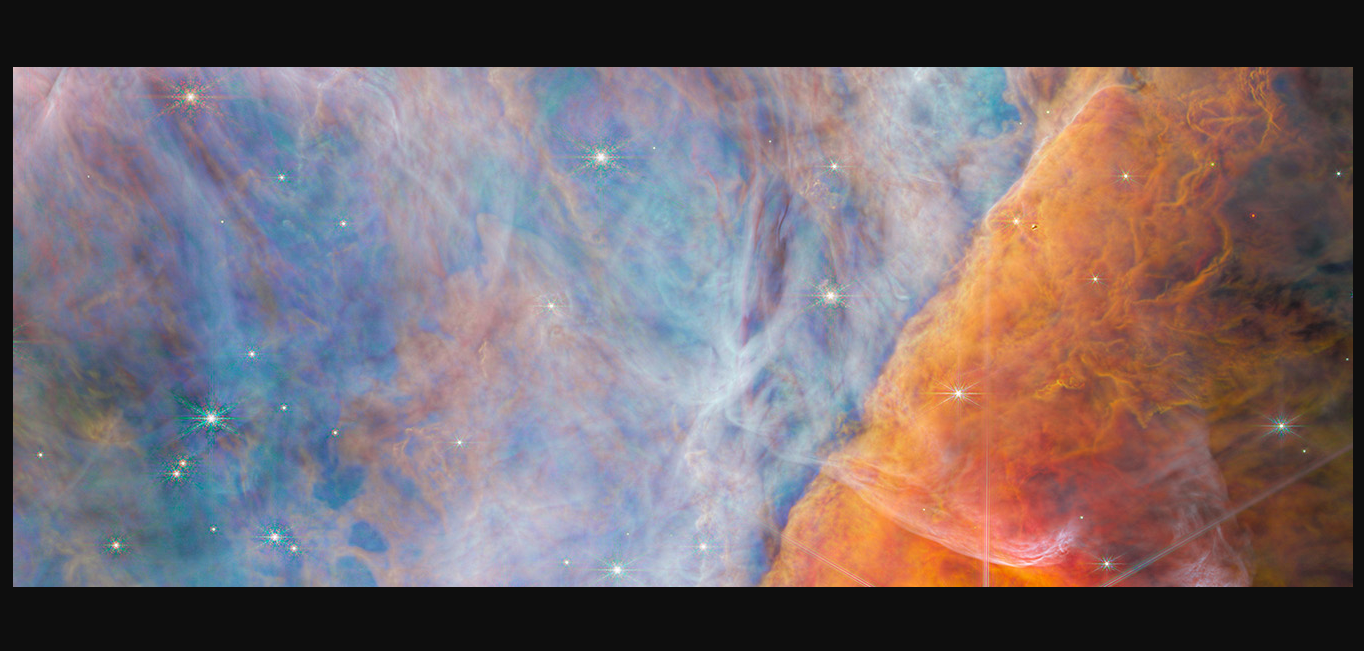Webb Telescope Discovers An Unprecedented Phenomenon In The Orion Nebula
The Webb Telescope discovers an unprecedented phenomenon in the Orion Nebula in a landmark discovery made by astronomers, who detected a carbon molecule in space that is believed to be a vital component for all known life.
Author:Daniel JamesReviewer:Karan EmeryJun 28, 20237.8K Shares202K Views

The Webb Telescope discovers an unprecedented phenomenon in the Orion Nebulain a landmark discovery made by astronomers, who detected a carbon molecule in space that is believed to be a vital component for all known life.
This significant finding was accomplished within the Orion Nebula, a cosmic environment where young stars are born, located approximately 1,350 light-years away from Earth. Although the distance may seem immense, the Orion Nebula stands as the nearest expansive region where stars are actively forming.
Using the revolutionary James Webb Space Telescope, a cutting-edge observatory jointly operated by NASA, the European Space Agency (ESA), and the Canadian Space Agency (CSA), scientists have not only captured a stunning and vibrant image of the Orion Nebula, surpassing the previous achievements of the Hubble Space Telescope, but have also made a remarkable discovery within a young star system named d203-506.
Within this system, which possesses a protoplanetary disk - a rotating disk composed of gas and dust - the researchers stumbled upon a previously unseen molecule.
This groundbreaking revelation holds immense significance as astronomers embark on a quest to identify traces of carbon compounds throughout the vast expanse of the universe. Such compounds are considered fundamental to the origins of life, as we presently comprehend it on Earth. Intriguingly, the ancient Mayan civilization referred to the Orion Nebula as the cosmic fire of creation, adding a mystical dimension to this extraordinary finding.

Webb Telescope detects 'never before seen in space' molecule in awesome Orion Nebula view
In a surprising revelation, the enigmatic signal has been identified as the presence of methyl cation, a molecule that was relatively unfamiliar to the general public until recently. NASA even provided a pronunciation guide to ensure its correct understanding ("CAT-eye-on," distinct from the last syllables of "vacation"). Organic chemists emphasize that methyl cation plays a crucial role in the formation of more intricate carbon-based molecules.
Since the 1970s, scientists have theorized that this substance serves as a missing link bridging simple molecules and the more complex organic molecules essential for life. However, direct evidence of its existence in space had eluded researchers until now. NASA draws a parallel between the function of methyl cation and a train station, where a molecule can temporarily reside before embarking on various routes to interact with other molecules.
“„This detection not only validates the incredible sensitivity of Webb but also confirms the postulated central importance of (methyl cation) in interstellar chemistry.- Marie-Aline Martin-Drumel, one of the coauthors on the new study
Within a vast expanse of dust and gas, home to numerous stars in the process of formation, astronomers have discovered the presence of the aforementioned molecule. This expansive region is centered around the Trapezium, a distinctive arrangement of four massive stars, resembling a trapezoidal shape. Notably, the molecule was detected surrounding a diminutive red dwarf star, originating from a region abundant in intense ultraviolet light emitted by the Trapezium.
Astronomers speculate that the majority of disks involved in the formation of planets experience a phase of intense ultraviolet radiation. This phenomenon arises due to the tendency of stars to form in clusters that include massive stars capable of emitting UV light. Interestingly, UV radiation typically acts as a destructive force towards complex organic molecules.
However, in this particular instance, the research team believes that the radiation might paradoxically be playing a role in facilitating the formation of the identified molecule by providing the necessary energy.
Conclusion
Despite the discovery of this crucial molecule for life, scientists also observed the absence of another well-known ingredient within the star system: water. This raises further questions regarding the role of ultraviolet radiation, according to Olivier Berné, the lead author of the study, who expressed this sentiment in a statement.
“„It might actually play a critical role in the early chemical stages of the origins of life.- Olivier Berné
Jump to

Daniel James
Author
Daniel James is a distinguished gerontologist, author, and professional coach known for his expertise in health and aging.
With degrees from Georgia Tech and UCLA, including a diploma in gerontology from the University of Boston, Daniel brings over 15 years of experience to his work.
His credentials also include a Professional Coaching Certification, enhancing his credibility in personal development and well-being.
In his free time, Daniel is an avid runner and tennis player, passionate about fitness, wellness, and staying active.
His commitment to improving lives through health education and coaching reflects his passion and dedication in both professional and personal endeavors.

Karan Emery
Reviewer
Karan Emery, an accomplished researcher and leader in health sciences, biotechnology, and pharmaceuticals, brings over two decades of experience to the table. Holding a Ph.D. in Pharmaceutical Sciences from Stanford University, Karan's credentials underscore her authority in the field.
With a track record of groundbreaking research and numerous peer-reviewed publications in prestigious journals, Karan's expertise is widely recognized in the scientific community.
Her writing style is characterized by its clarity and meticulous attention to detail, making complex scientific concepts accessible to a broad audience. Apart from her professional endeavors, Karan enjoys cooking, learning about different cultures and languages, watching documentaries, and visiting historical landmarks.
Committed to advancing knowledge and improving health outcomes, Karan Emery continues to make significant contributions to the fields of health, biotechnology, and pharmaceuticals.
Latest Articles
Popular Articles
